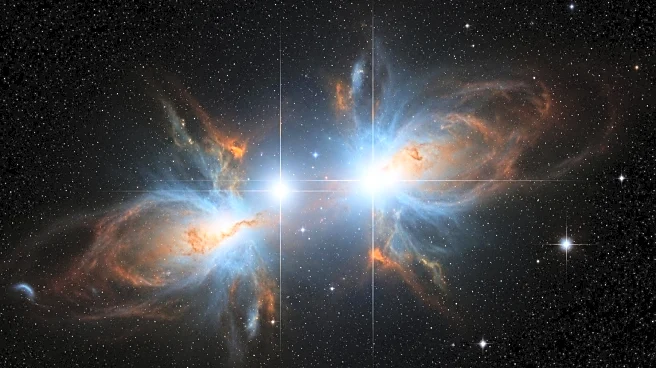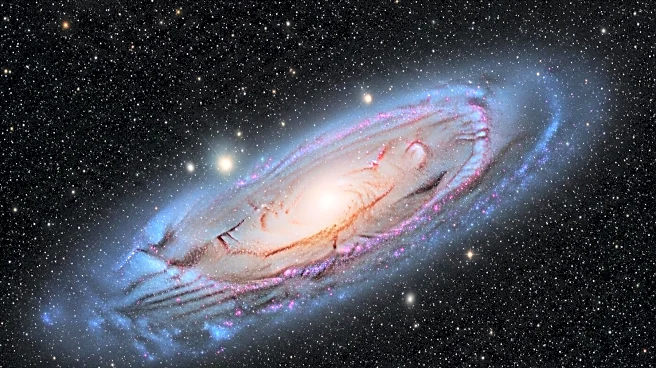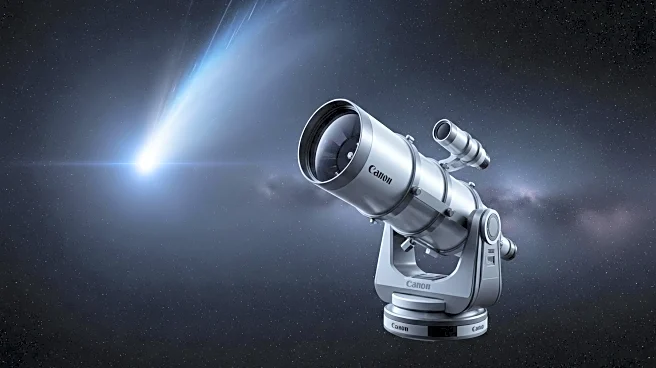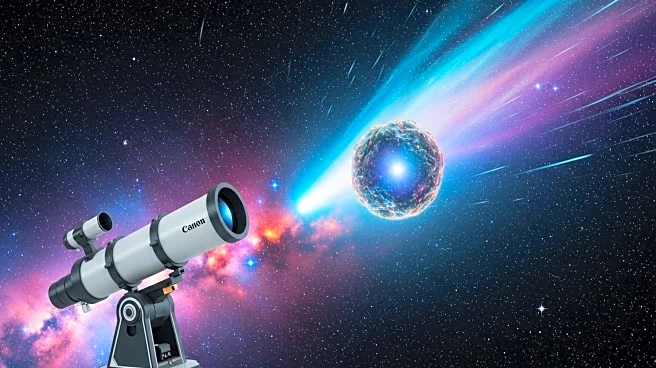What's Happening?
Astronomers have identified one of the most massive binary star systems in the galaxy, NGC 3603-A1, located 22,000 light years away from the Sun. The system consists of two stars with masses of approximately 93 and 70 times that of the Sun, orbiting each other every 3.8 days. This discovery was made using archival Hubble Space Telescope data and new observations. The rapid orbit and mass exchange between the stars provide insights into massive star evolution and the origins of binary black holes, which are known sources of gravitational waves. The research was propelled by a key observation made by Sarah Bodansky, an undergraduate student at Carleton College, who identified spectral features that revealed the binary nature of the system.
Why It's Important?
The discovery of NGC 3603-A1 is significant as it enhances understanding of massive star evolution and the formation of binary black holes. These systems are crucial for predicting gravitational wave events, which have been detected since 2015. The insights gained from studying such massive binaries can improve models of stellar evolution and help astronomers anticipate where and when black hole collisions might occur. This research contributes to the broader field of astrophysics by providing a more fundamental measurement of stellar masses, which is often challenging due to reliance on less constrained models.
What's Next?
Future research will likely focus on further observations of NGC 3603-A1 to refine understanding of its dynamics and mass exchange processes. Continued study of this system could lead to more accurate predictions of gravitational wave events and enhance models of massive star evolution. The findings may also prompt additional investigations into other starburst regions in the galaxy, potentially uncovering more massive binary systems.
Beyond the Headlines
The discovery highlights the importance of archival data and the role of young researchers in advancing scientific knowledge. It underscores the dynamic nature of star systems and the complex interactions that can lead to significant astronomical phenomena. The study also illustrates the collaborative efforts required in astrophysics, involving multiple institutions and researchers.











